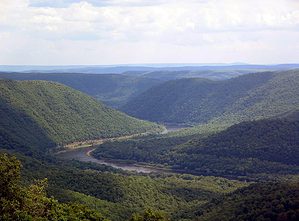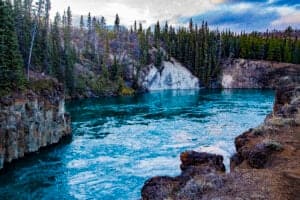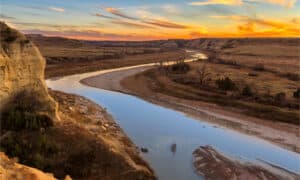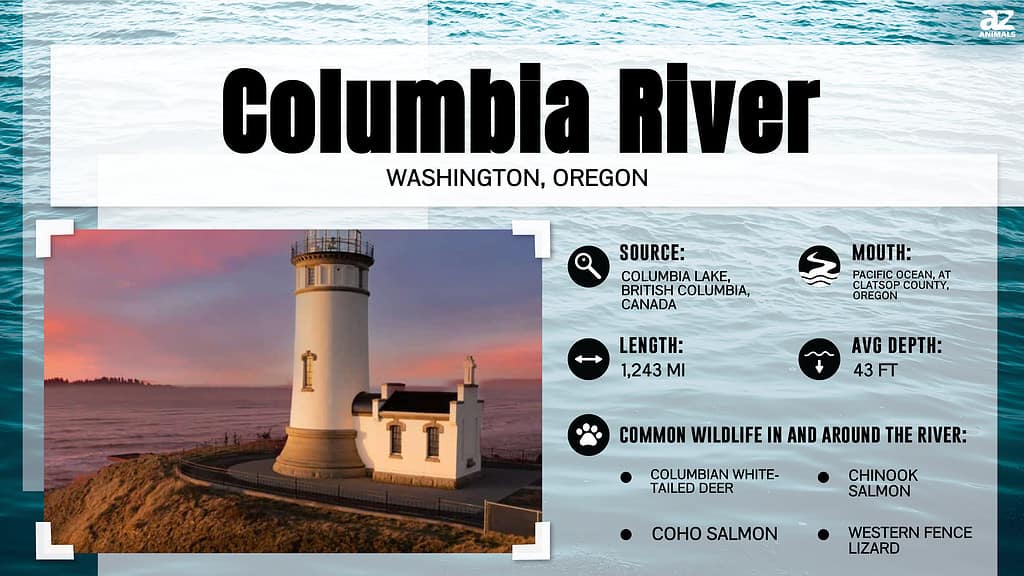
Originally called “Rio de San Roque,” the Columbia River is among the largest rivers in the Pacific Northwest of the United States. It’s the second-largest by volume in North America after Mississippi and is the world’s greatest source of hydroelectric power. Nearly half of all the hydroelectricity in the U.S. comes from the river and its tributaries.
It is over a hundred times the volume of the Rio Grande River, fifteen times the Sacramento River, and four times the volume of the Colorado River. As a result, the river has been nicknamed “the Mighty Columbia” and “Big River” because of its immense water volume.
Read on to learn more about this magnificent river inhabited by Sinixt, Shuswap, Umatilla, Spokane, Shoshone Bannock, Cayuse, Perse, and the confederated tribes of Warm Springs.
What is the actual depth of the Columbia River?
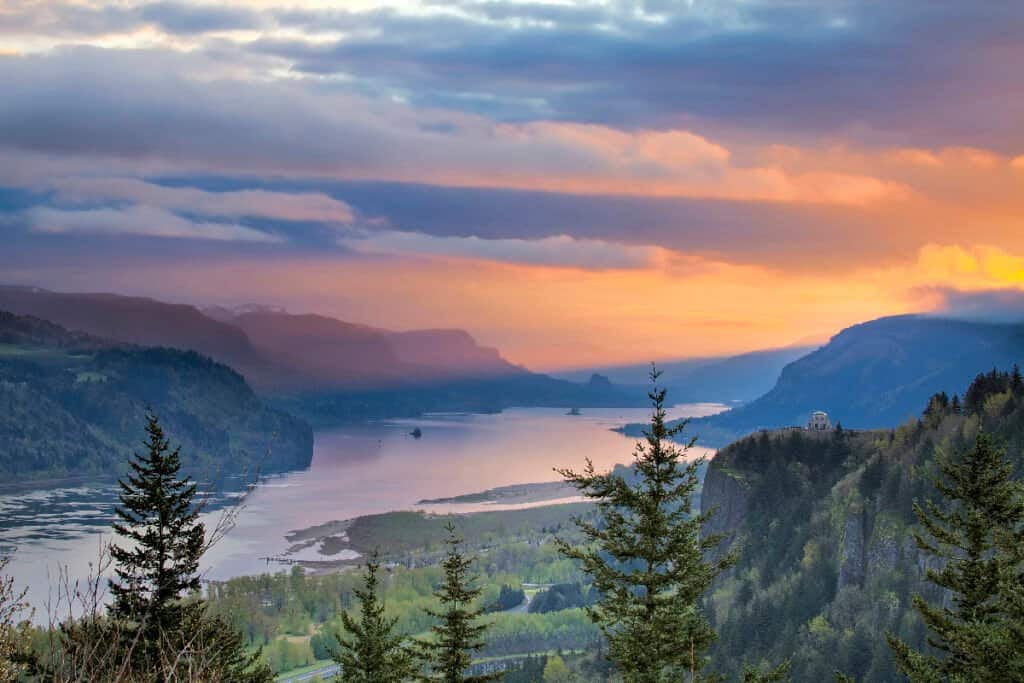
The Columbia River has the biggest discharge into the Pacific Ocean of any river.
©iStock.com/JPLDesigns
Water depths have been estimated at 400 feet (120 m) over modern Portland, Oregon, and at 1,000 feet (300 m) at Wallula Gap. The rupture of ice dams at Glacial Lake Missoula towards the end of the last ice age resulted in greater discharge rates of about ten times the combined flow of all the rivers worldwide.
At the time, the water levels resulting from the Missoula Floods were estimated to be 400 feet (120 m) in Portland, Oregon, 830 feet (253 m) at Bonneville Dam, and 1250 feet (381 m) at the Wallula Gap. Low flow resulting in low depths occurs in winter and autumn, leading to water shortages in the river’s hydroelectric plants. High flows occur throughout spring and early summer, soon after the snow melts in the mountainous watershed.
Where does the Columbia River start and end?
The Columbia River rises in the Rocky Mountains of British Columbia, Canada. Its primary source is Columbia Lake. With an elevation of 2,690 feet (820 m) above sea level, Columbia Lake forms Columbia’s headquarters in the Canadian Rockies. The river then flows across Lake Windermere and past Invermere town into Kinbasket Lake. From there, it turns into the Big Bend, flows northwest, and then south into the U.S. state of Washington.
After turning west to form most of its border between Washington and Oregon, the Columbia River finally empties into the Pacific Ocean. Its drainage basin is one of the largest in North America. Significant tributaries include the Kootenai River, Willamette River, Snake River, Spokane River, and Pend Oreille River, among others.
How long is the Columbia River?
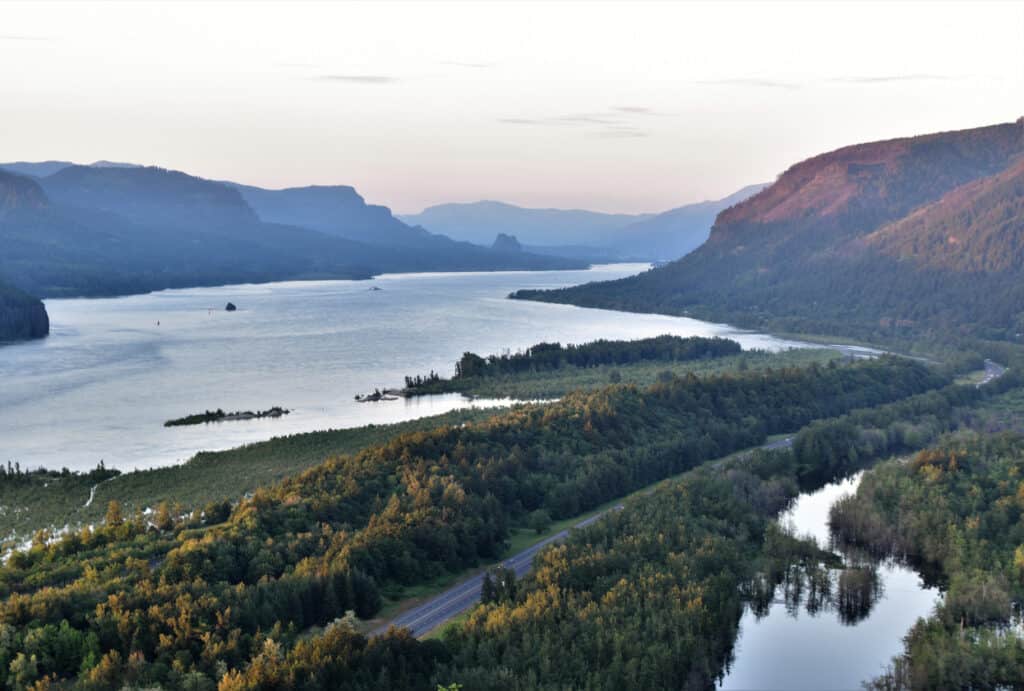
The Columbia River is approximately 1,243 miles (2,000 km) long.
©iStock.com/Chaitra Kukanur
The Columbia River is approximately 1,243 miles (2,000 km) long and drains 258,000 square miles (668,000 square km). About 500 miles (800 km) of the river’s total length lies in Canada, between the U.S. border and its headquarters in British Columbia. Its course is northwest for the first 190 miles.
Where is the Columbia River Located on a Map?
The Columbia River is situated in the western part of North America, specifically in the Pacific Northwest region. It runs through seven US states: Montana, Wyoming, Idaho, Oregon, Washington State, and Alaska, as well as into one Canadian province – British Columbia. To locate this river on a map, one can look for its source at Columbia Lake, which lies north of Canal Flats village in British Columbia, or search for its mouth, where it empties into the Pacific Ocean at Astoria in Oregon. The easiest way to get to The Columbia River from any of these locations is by road transport or via water transportation, such as boats and ferries that operate along its length.
What are some of the geological features of the Columbia River?
The Columbia River Gorge is one of the most spectacular scenic stretches you can lay your eyes on in Oregon. It’s a canyon of the Columbia River that is about 1,200 m deep and 80 miles long. The gorge was formed by the same Ice Age floods that created the Willamette Valley.
The Columbia River Gorge is packed with many natural wonders; even a short trip might not be enough for you to explore such a small space. The crystal pool glistens with cool water during summer, and the waterfalls gush with rain and snowmelt in spring. Catch sight of the ever-present mist feeding the moss on the boulders during winter. The gorge is home to 71 waterfalls, from the towering plunges to minor creek falls. Multnomah Falls is the highest.
What kind of animals live in and around the Columbia River?
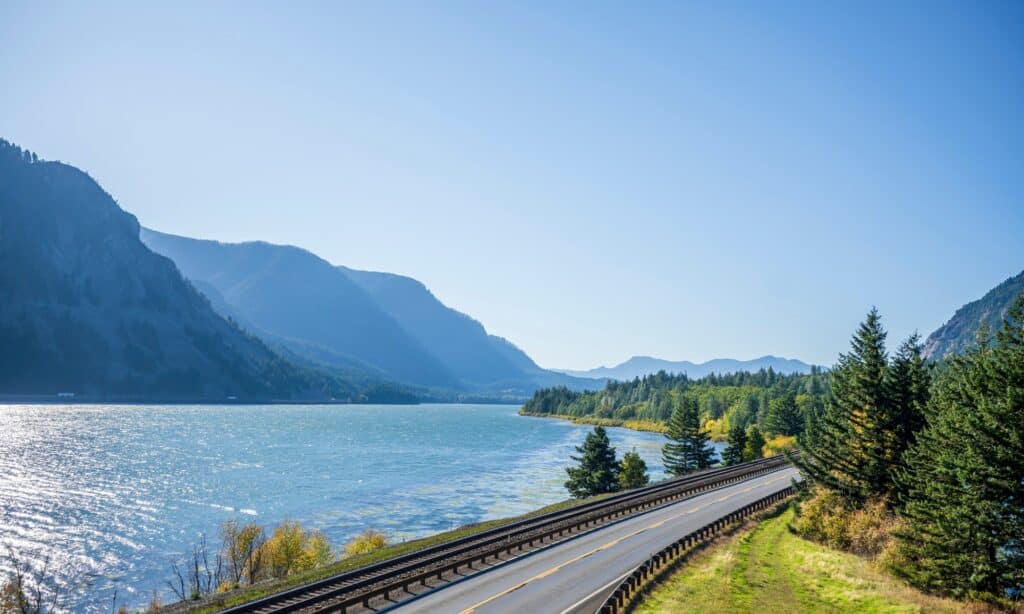
The Columbia River is well-known for its salmon and steelhead runs.
©iStock.com/vitpho
The wetlands region of the Rocky Mountain Trench boasts a high diversity of bird species, including grebes, Canadian geese, swans, great blue herons, woodpeckers, ospreys, bald eagles, and many other shorebirds. This region is also home to cougars, coyotes, beavers, deer, river otters, snakes, and turtles.
The Columbia River is well-known for its salmon and steelhead runs. Every year, over one million summer steelhead, Chinook, coho, and sockeye salmon migrate up the river to spawn in the river’s major tributaries. The surrounding mountainous regions of the upper Columbia River are home to moose, bighorn sheep, mountain goats, wolverines, bears, and wolves.
10 Amazing Facts About the Columbia River?
The Columbia River is named after Capt. Robert Gray’s ship Columbia Rediviva, which was the first to sail the river on May 11, 1792. Here are more incredible facts about the “Mighty Columbia.”
- There are fourteen dams along the Columbia River, three of which are in Canada (the Keenleyside, Revelstoke, and Mica dams).
- Many different First Nations people and Native Americans have a historical and continuing presence along the Columbia River.
- So many movies, including Snow Falling on Cedars (1999), Indian Jones and the Temple of Doom (1984), Ride the Mountain (1967), and Maverick (1994), among others, have been filmed on the Columbia River.
- Most of the Columbia River’s drainage lies between the Cascade Mountains on the west and the Rocky Mountains on the east.
- The Columbia River receives approximately 60 significant tributaries. The Willamette River, Snake River, Pend Oreille River, and the Kootenay River are the largest tributaries that empty directly into the Columbia.
- The Columbia River flows through several cities, including Astoria, Longview, Vancouver, Portland, and Revelstoke.
- Columbia is currently home to hundreds of contaminated waste sites. The Hanford Nuclear Reservation is the most polluted place in the Northern Hemisphere. Industrial growth has had a profound effect on the quality of water. Several species of anadromous and resident fish reveal the heavy toll of toxic pollution in the Columbia River.
- Dams prevent the migration of anadromous fish. Numerous steelhead and salmon return to the streams where they were born to spawn while the entire population of sockeye dies.
- The Columbia River has experienced six multi-year droughts since 1750. The longest lasted about 12 years in the mid-century and reduced the river’s flow to around 20% below average. There was also a less severe drought in 1992-1993 that affected many farmers, wildlife managers, shippers, and hydroelectric power producers.
- Industrialists proposed reshaping the natural channel of the Columbia River in the early 1880s to improve navigation. Several canals, navigation locks, and jetties at the river’s mouth were constructed, so ocean freighters can now travel upriver as far as Vancouver and Portland. Barges can go as far inland as Lewiston, Idaho.
The photo featured at the top of this post is © iStock.com/vitpho
Thank you for reading! Have some feedback for us? Contact the AZ Animals editorial team.




